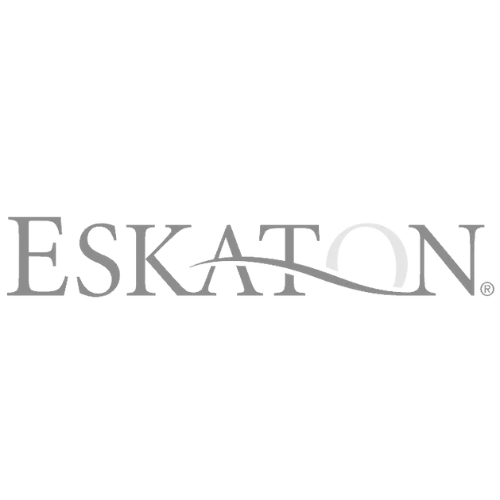Resources
Below I've listed some free resources to that have helped me and other business owners succeed.
Blog

Guide to Effective OKRs
"Strategy without tactics is the slowest route to victory. Tactics without strategy is the noise before defeat." - Sun Tzu, The Art of War
Mastering the art of writing effective OKRs is crucial for their success. A well-crafted OKR motivates and directs teams and individuals toward specific achievements. On the contrary, a poorly formulated OKR can lead to demotivation and a lack of clear direction, resulting in wasted time and effort.
Consider these points when developing your OKRs.
CRAFTING OKRS
Defining Objectives: To begin, it's important to recognize that "Objectives" typically fall into three categories: building, enhancing, and innovating. An Objective might aim to create something new (build), enhance an existing process or product (enhance), or completely reimagine an existing concept (innovate).
When shaping your Objective, focus on the end goal and ensure it:
Guides and Motivates: Choose language that not only targets the desired goal but also encourages and involves your team in achieving it.
Challenging yet Achievable: Your Objectives should push boundaries but remain attainable.
Clear and Understandable: Make sure the title of your Objective is straightforward and avoids complex jargon. Details can be added in the description.
Metric-Free: Objectives should set the general direction and prioritized outcomes, leaving specific measurements to the Key Results.
Aligned: Objectives can support your strategy, another OKR, or enhance a KPI. Sometimes, they may not align, such as in the case of personal development Objectives.
Time-Sensitive: Assigning a deadline, like a quarter or a year, is crucial for tracking progress and achieving your goals.
Establishing Key Results
After setting your Objective, create Key Results that define and indicate the achievement of your Objective.
Your Key Results should be:
Focused on Outcomes: Key Results should represent the goals you aim to reach within the set timeframe. They are not just tasks but indicators of whether the Objective has been met.
Quantifiable: Each Key Result must have a measurable metric.
Relevant: Ensure your Key Results are specifically related to the Objective and clarify what its achievement entails.
Ambitious yet Feasible: Set Key Results that challenge the norm but remain within your capabilities.
Balanced: Aim for no more than five Key Results per Objective to maintain focus and clarity.
Formulating Initiatives
With your Objective and Key Results defined, the next step is to outline the Initiatives - the tasks and projects that will drive your Key Results.
If your Initiatives don't impact your Key Results as expected, it may be necessary to reevaluate your approach.
Your Initiatives should be:
Well-Defined: Clearly outline the scope and nature of the work expected, using specific action verbs.
Controllable: Ensure you have complete control over your Initiatives to guarantee their completion.
Understanding the fundamentals of OKR, and how to craft an effective one.
Let's examine the differences between well-constructed and poorly constructed OKRs.
The Scenario: Consider a Sales team focused on enhancing client engagement and increasing sales efficiency.
Example of an Ineffectively Constructed OKR: Objective: Implement a new sales strategy
Key Result 1: Conduct sales training for the team
Key Result 2: Introduce a new sales software
Initiative 1: Organize weekly training sessions
Initiative 2: Select and deploy a sales management tool
The problem with this OKR is...
Its focus on activities rather than outcomes.
Objective and Key Results do not offer insights into how the sales strategy will improve client engagement or sales efficiency.
Objective sounds more like a Key Result, lacking in motivation and clear direction, and does not specify the intended result: enhanced sales performance.
The Key Results are essentially tasks needed to implement the new strategy.
Example of an Effectively Constructed OKR: Objective: Significantly enhance client engagement and sales efficiency
KR 1: Increase client retention rates from 70% to 85%
KR 2: Improve the average sales cycle time from 30 days to 20 days
Init 1: Develop and implement a comprehensive client relationship training program
Init 2: Evaluate and integrate a cutting-edge sales management system
Init 3: Initiate a feedback mechanism to continuously improve client interactions
In this revised example, the OKR is focused on specific, measurable outcomes.
The Objective is clear, motivating, and provides direction.
The Key Results directly measure the improvements in client engagement and sales efficiency.
The Initiatives describe specific actions aimed at achieving these Key Results, thereby making the OKR outcome-driven and actionable.
Sealing the Deal with Effective OKRs
In conclusion, the art of crafting effective OKRs is not just about setting goals, but about creating a roadmap for success. It involves establishing clear, motivational objectives and defining measurable, relevant key results. Remember, an effective OKR is more than a mere statement of intent; it's a strategic tool that bridges the gap between ambition and achievement.
As we've seen in the examples, the distinction between effective and ineffective OKRs is stark. Effective OKRs focus on outcomes and results, offering clear, inspiring objectives, and measurable key results. They guide actions through well-defined initiatives. In contrast, ineffective OKRs often get bogged down in activities or outputs, lacking the strategic foresight and clarity needed to drive meaningful progress.
The key takeaway? Focus on crafting OKRs that are outcome-oriented, measurable, and align with your strategic goals. Ensure they inspire action, provide clear direction, and are realistic yet challenging. Remember, the best OKRs don't just set targets; they fuel progress and foster a culture of continuous improvement and achievement.
As you apply these principles in your own OKR writing, you'll find that your objectives become more impactful, your strategies more focused, and your teams more aligned and motivated. This is the power of well-written OKRs - turning visions into realities, one goal at a time.
Embrace these guidelines, and you'll be well on your way to mastering the art of writing OKRs that not only define success but also drive it.
hire US on a monthly retainer
CarrierConsultingCo. will work with your team to help you reach your annual and quarterly goals. Currently only 3 remaining spots available. Fees start at $500/hr
Trusted by leaders Like You








We exist to help leaders lead their business, home and communities.
Carrier Consulting Co
SERVICES
2024 Mastermind
One-on-One Coaching
Group Coaching
